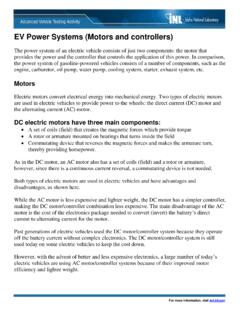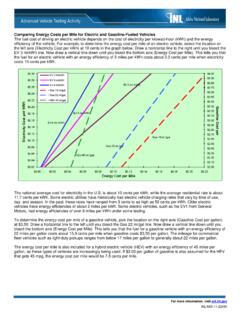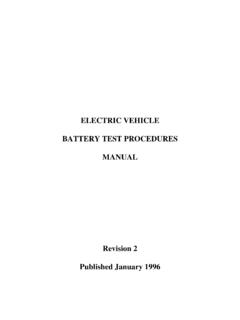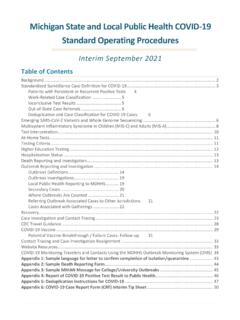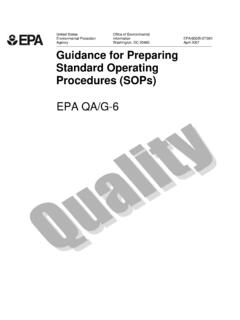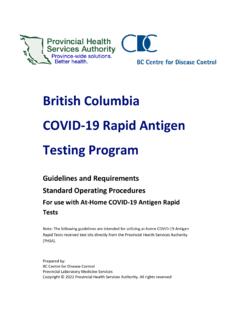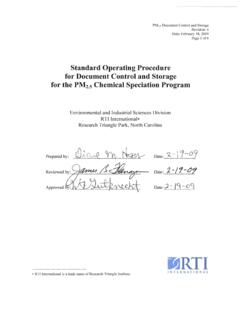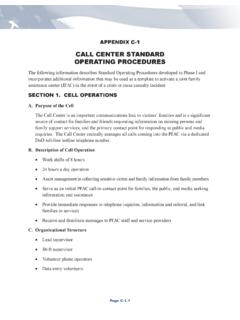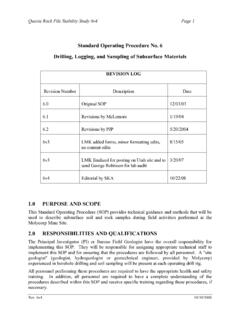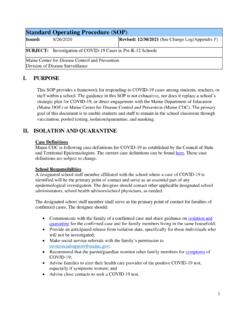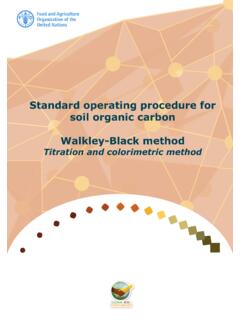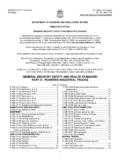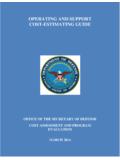Transcription of APPENDIX C – GASEOUS HYDROGEN PIPING SPECIFICATION
1 APPENDIX C GASEOUS HYDROGEN PIPING SPECIFICATION February 19, 2001, Rev. 0 GENERAL This SPECIFICATION provides guidelines for designing and installing the GASEOUS low-pressure (<275 psig) and high-pressure (276 to 7,000 psig) high-purity HYDROGEN process PIPING . For both low- and high-pressure, stainless steel (303, 304, 316) tubing, PIPING , fittings, and components are preferred. PIPING systems should be designed and built to meet ANSI/ASME for process PIPING . Specifications for the tubing are ASTM A269 TP 304 and 316. Maximum hardness is 80 Rb. MAXIMUM ALLOWABLE WORKING PRESSURE Maximum allowable working pressures (MAWP) for commercially available tubing and PIPING are given below.
2 PIPING systems must be designed so that the process pressure of the gas will not exceed the MAWP of the pipe, tubing, or components. LOW-PRESSURE HYDROGEN (<275 PSIG) For all sizes from to 1-in. OD stainless steel tubing, wall thickness is acceptable. Schedule 10S to Schedule 80S stainless steel pipe is also acceptable for both plain end and threaded end styles. Threaded ends should be 80S. HIGH-PRESSURE HYDROGEN (275 TO 7000 PSIG) See the Tables below. The HYDROGEN system downstream of the compressor will operate at 6,000 psig. The high-pressure storage tubes are designed to a maximum allowable working pressure of 6,667 psig.
3 The tubing or PIPING for these high-pressure circuits should be selected to meet or exceed this pressure. To this end, the high-pressure HYDROGEN PIPING /tubing will be designed for 7,000 psig. Acceptable sizes and wall thicknesses are: 1/4-in. OD tubing: and wall thickness; 3/8-in. OD tubing: and wall thickness; 1/2-in. OD tubing: and wall thickness; 3/4-in. OD tubing: Not Allowed 1-in. OD tubing: Not Allowed 3/4-in. Schedule 80 PIPING : Limited to 6,550 psig with plain ends The components specified in the Instrument Summary are primarily 1/2-in. and are configured with either 1/2-in. female pipe ports or compression style tube fittings, depending on availability.
4 The PIPING designer/contractor may choose to modify the specified end connection when ordering the components to facilitate installation. If the end connections are modified, then confirm with the supplier that the pressure rating for the component with the new end connection still meets the required MAWP for the system (7,000 psig). APPENDIX C GASEOUS HYDROGEN PIPING SPECIFICATION : Page 1 Maximum Allowable Working Pressure 304 and 316 Stainless Steel Annealed Seamless Tubing (-20 to 100 F) Wall Thickness (in.) Tubing OD (in.) 1/4 4,600 5,891 8,602 11,688 3/8 3,777 5,460 7,517 1/2 2,768 3,976 5,423 7,162 3/4 1,814 2,581 3,478 4,544 5,273 1 1,346 1,907 2,562 3,329 3.
5 582 Maximum Allowable Working Pressure 304 and 316 Stainless Steel Annealed Seamless Pipe (-325 to 100 F) Wall Thickness, Pipe Schedule Pipe Nominal Size Schedule 10S Schedule 40S Schedule 80S Schedule 160S Schedule XXS 1/2-in. plain ends 3,483 4,600 6,550 7,800 12,200 1/2-in. threaded Not Allowed 1,760 3,399 3/4-in. plain ends 2,745 3,820 5,370 7,300 10,200 3/4-in. threaded Not Allowed 1,549 2,921 1-in.
6 Plain ends 2,887 3,580 4,940 6,600 9,500 1-in. threaded Not Allowed 1,361 2,600 FITTINGS TUBE FITTINGS Several suppliers of tube fittings will meet the required 7000-psig design pressure for 1/4-in., 3/8-in., and 1/2-in. tubing. Cajon (Swagelok), Parker, and Hoke all can supply Stainless Steel tube fittings for this application. Cajon fittings were used, as they were the only manufacturer to certify their products for use in HYDROGEN and CNG service. Parker Hannifin Triple-Lok 37 degree flared tube compression fittings having a pressure rating of 7000 psig are acceptable in sizes up to 1-in.
7 OD. Cone-and-thread style fittings such as the BuTech M/P fittings are also acceptable up to 1-in. OD. PIPE FITTINGS Cajon (Swagelok) manufactures a line of 10,000-psig pipefittings in 1/4 to 1/2-in. configurations. These fittings are manufactured from bar stock or forgings and are designated suitable for 10,000-psig APPENDIX C GASEOUS HYDROGEN PIPING SPECIFICATION : Page 2 services by a -10K suffix on the end of the standard Cajon part number. BuTech also offers a line of fittings with a working pressure of 7000 psig or higher. Flowline manufactures a line of butt weld fittings, many of which are available in Schedule 160 and XXS configurations.
8 JOINING TECHNIQUES In general, with high-pressure HYDROGEN systems, welded joints are preferred over threaded or brazed connections, but threaded connections cannot be eliminated entirely. Many components are not available except as NPT end connections. Threaded connections should be kept to a minimum. Compression fittings are acceptable if rated for the operating pressure of the system and if properly installed and leak tested. Welded joints may be socket welds or butt welds. They should be accomplished using GTAW (TIG) welding techniques for either manual or automated (orbital welding). All welding must be completed by qualified welders following qualified procedures per ASME A liquid source of argon gas should be used for purging the PIPING system ID and for shielding on the OD of the weld area.
9 Purging is required to minimize oxidation and contamination in the weld zone. Purging also helps to control the weld bead profile. Minimum purge rate for 1/2-in. tubing and smaller is 10 SCFH. A welding log should be maintained that catalogs the welding parameters (date, time, purge flow rate, size and type of weld, welder name and identification number, inspector name, weld schedule, weld number, and drawing number). Mill certifications and test reports should be requested from the component supplier and maintained by the contractor as part of the welding log. The maximum allowable diameter misalignment for butt welds should be less than in.
10 Pipe/tube ends should be cut and prepped so that there are no nicks, burrs, chamfers, or sharp edges and no reduction in diameter or wall thickness. The ends should be square and perpendicular within in. The weld must have 100% penetration and show no points of discontinuity. The weld may have no undercut that will render the weld wall thickness thinner than the pipe/tube nominal wall thickness. The weld bead should be 2 5% thicker than the nominal wall thickness and should not be 10% thicker than the nominal wall thickness. The welds should have no porosity or inclusions when inspected under magnification and under white light.

